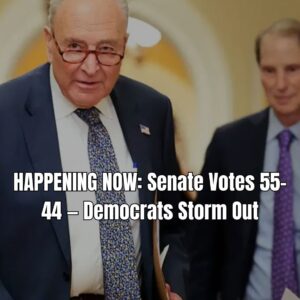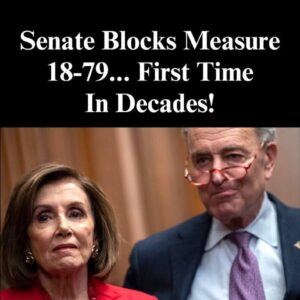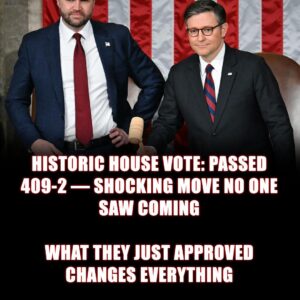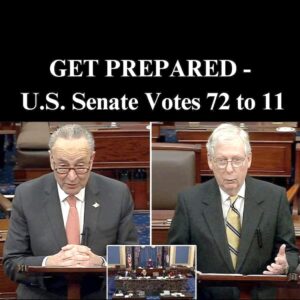The United States government entered its first full day of a partial shutdown on Wednesday after the Senate once again failed to move forward on a funding resolution. For the third time in two days, lawmakers rejected a proposal that would have extended government operations into November, leaving millions of Americans facing uncertainty about the impact on essential services, federal workers, and national programs.
A Third Failed Vote
On Wednesday, the Senate voted on a House-passed “clean resolution,” a temporary stopgap designed to keep the government running while longer-term negotiations continue. The measure required 60 votes to advance, but it fell short with a tally of 55–45.
Three lawmakers broke with their caucus to back the bill: Sen. Catherine Cortez Masto (D-Nev.), Sen. John Fetterman (D-Pa.), and Sen. Angus King (I-Maine), an independent who typically aligns with Democrats. Their votes highlighted growing unease within the party as the shutdown began to take hold.
The failure mirrors the results of earlier votes on Tuesday, signaling that the impasse is deepening rather than moving toward resolution.
The Shutdown’s Immediate Impact
A government shutdown occurs when Congress fails to pass legislation funding federal agencies. Without that authorization, many government services pause operations, and employees are either sent home without pay or required to work temporarily without compensation.
Among the immediate effects:
Federal employees across the country are bracing for furloughs or pay delays, creating financial strain for thousands of families.
National parks and museums may face closures or reduced hours, limiting public access and affecting tourism.
Food and assistance programs could see interruptions, including Supplemental Nutrition Assistance Program (SNAP) benefits, which millions of Americans rely on.
Small businesses and contractors tied to federal projects may face cash flow problems as payments stall.
Air travel could see indirect effects, with Transportation Security Administration (TSA) and Federal Aviation Administration (FAA) staff expected to work without pay, raising concerns about morale and safety over time.
For everyday Americans, the most immediate impact may not be visible right away, but as the shutdown continues, its effects compound — especially for vulnerable communities.
Political Blame Game
As is often the case during shutdowns, political leaders are scrambling to assign blame. Republicans have labeled the current standoff the “Schumer Shutdown,” pointing to Senate Minority Leader Chuck Schumer’s refusal to support the House-passed resolution.
At the same time, Democrats argue that the resolution failed to address broader concerns, including spending levels and policy disputes. Some progressives within the party have pushed Schumer to take a harder line, frustrated by earlier compromises made in March to avoid a shutdown at that time.
The result is a widening divide not only between Republicans and Democrats but also within the Democratic Party itself.
Schumer Under Pressure
Schumer’s decision has drawn scrutiny from both his opponents and members of his own party. Critics note that in the past, he has spoken against government shutdowns, arguing they harm working families and damage public trust. This shift has led some to question whether his stance is more about political survival than policy principles.
Adding to the speculation are persistent rumors that Rep. Alexandria Ocasio-Cortez (D-N.Y.), one of the most prominent progressive voices in the House, may consider challenging Schumer for his Senate seat in 2028. Aligning more closely with the left wing of his party now could be seen as a move to protect his political standing in the long term.
A Familiar Cycle
This is not the first time the U.S. has found itself in this position. Government shutdowns have become a recurring feature of modern politics, often resulting from partisan standoffs over spending priorities.
In 2013, a shutdown lasted 16 days as lawmakers clashed over the Affordable Care Act.
In 2018–2019, the longest shutdown in U.S. history stretched 35 days during a dispute over border wall funding.
While each shutdown has its own unique circumstances, the effects tend to be similar: federal workers caught in the middle, public frustration growing, and lawmakers ultimately pressured to reach a compromise after prolonged stalemates.
The Human Side of the Shutdown
Beyond the political maneuvering in Washington, the shutdown carries real consequences for ordinary Americans.
Consider the case of federal employees: nearly 4 million workers could be affected, including about 2 million civilian federal employees and an additional 1.3 million active-duty military personnel. Many of these individuals live paycheck to paycheck and may struggle to cover rent, groceries, or childcare costs during even a short shutdown.
Programs for low-income families also face disruption. Women, Infants, and Children (WIC) benefits — which provide food assistance to mothers and young children — could run out of funding within days. For many families, these benefits are a lifeline.
Then there are the ripple effects on the economy. Small businesses that rely on federal contracts may see projects delayed or canceled. Tourism could take a hit if parks and cultural sites close. Consumer confidence often dips during shutdowns as Americans worry about instability in Washington.
What Comes Next?
The central question now is how long the shutdown will last. Negotiations continue, but neither side has shown signs of major concessions.
Republicans argue that passing a clean continuing resolution is the most straightforward way to keep the government funded while bigger debates play out. Democrats counter that the resolution ignores critical priorities and reflects misplaced spending choices.
For now, federal workers and millions of Americans are left waiting. If history is any guide, the shutdown will continue until political pressure mounts high enough to force compromise. Public opinion polls, economic fallout, and visible disruptions in daily life often become the catalysts for action.
Conclusion
The third failed Senate vote underscores the deep divisions in Washington and the growing frustration across the country. As the shutdown stretches on, its effects will become more pronounced — from furloughed workers and delayed paychecks to families uncertain about access to critical programs.
While politicians trade blame and calculate political risks, the real cost is borne by ordinary Americans who rely on a functioning government. Whether this standoff lasts days, weeks, or even longer will depend not just on the numbers in Congress but on whether leaders can put aside political maneuvering and find common ground.
For now, the government remains at a standstill, with millions of people waiting anxiously for Washington to act.





